There’s a general assumption that if a pedal isn’t made of metal then it must be made of plastic. Sometimes even carbon gets insulted by being referred to as plastic. These new DMR V11 pedals are not aluminium and they are not plastic. They are made from a composite material of Nylon and resin. They are not plastic and they deserve better than to be referred to as such.
- Price: £50
- From: DMRbikes.com
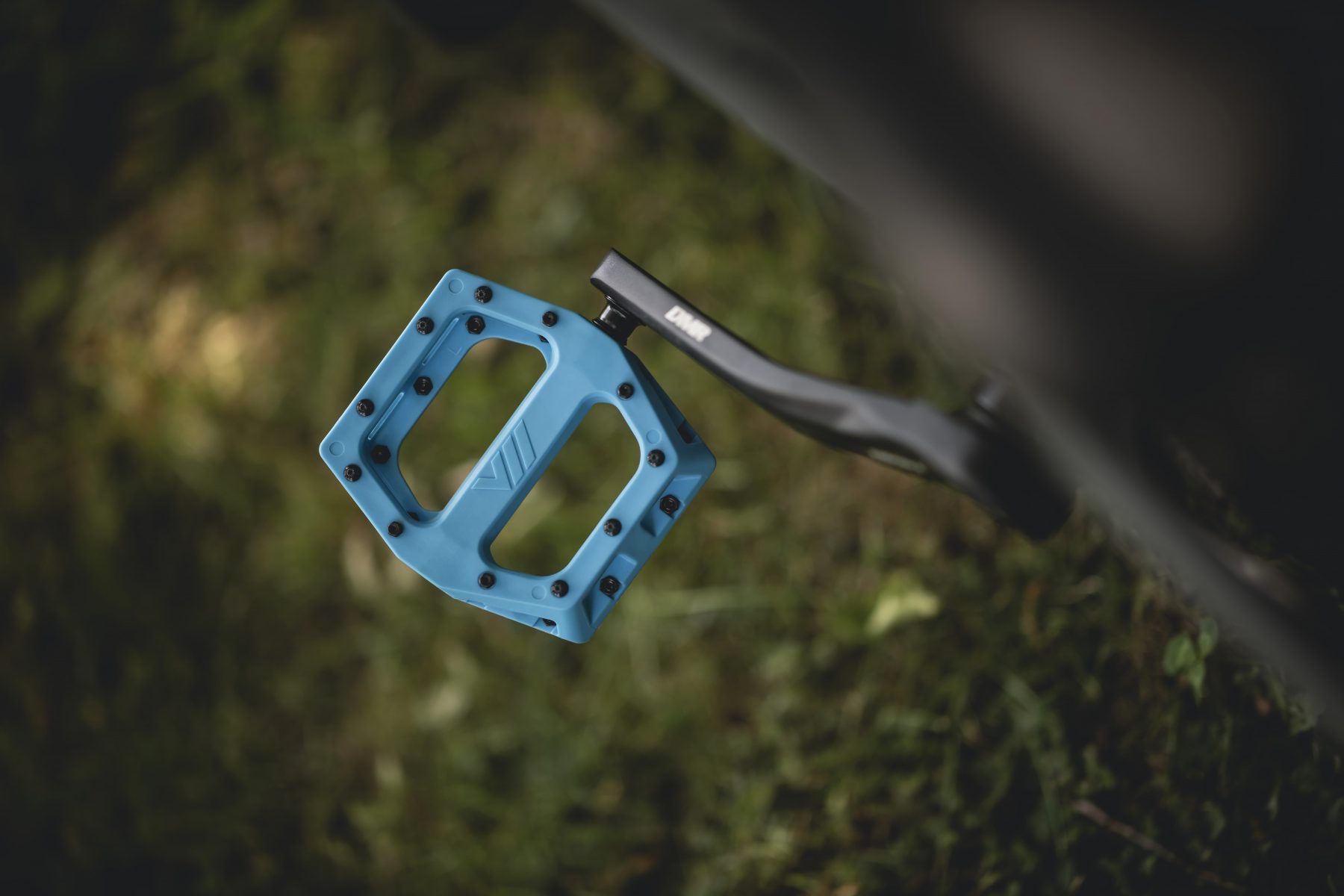
They are loosely based around the DMR Vault but have some distinct differences, not all of which are budget focused. They have the same number of pins as the Vault – 44/pair. The pins are roughly positioned in the same places and the total area of the platform is very similar at 105mm x 105mm. But, as they are not made of CNC’d aluminium and are instead injection moulded they are half the price of the Vaults at £50.
DMR claim that the pedal was designed with the help of their friendly sponsored pro rider, Olly Wilkins. The ‘presser’ that came with these pedals tells us that in particular, Olly was responsible for the selection of the pins that are a mix of standard looking and the DMR Moto pins that are more pointy and ridged. The Moto pins sit at the front (4 pins) and rear (3 pins) on each side of the pedal with the standard sized pins running down each side. All the pins have locking retaining bolts and have flared bases so you can really get them tight.
The platform is what differentiates the V11 from more ‘normal’ flats in that the centre supporting beam is concave. That just means it’s not flat and dips in by 3mm in total compared to the external width of the pedal. You can see the dip quite clearly in this next image. The outer width of the pedal is 19mm which dips to 16mm at the centre giving a 1.5mm dip on each side.
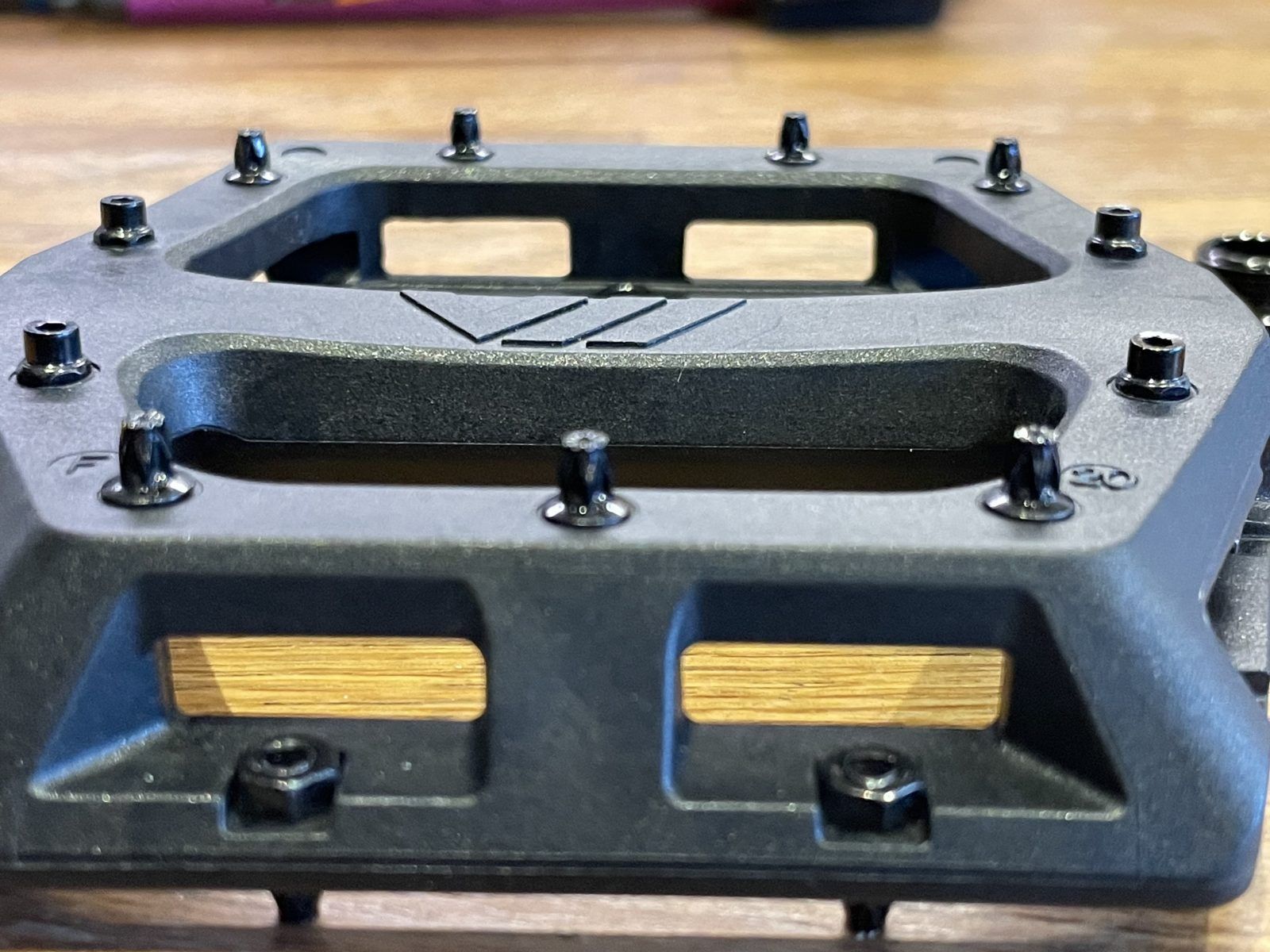
The axle is made from forged 4140 cromoly steel with a sealed bearing on the outside and a bushing on the inside. The outer axle cap is aluminium and like the main axle is adjusted with a standard 6mm hex key. There are no flats on the axle for pedal spanners.
There are a full set of spare parts available from DMR and the pin kits include a tool for the Moto pins that can’t be adjusted with a standard hex key.
Finally, they weigh in at a quoted weight of 450g per pair, although my kitchen scales suggested mine were a few grams under that.
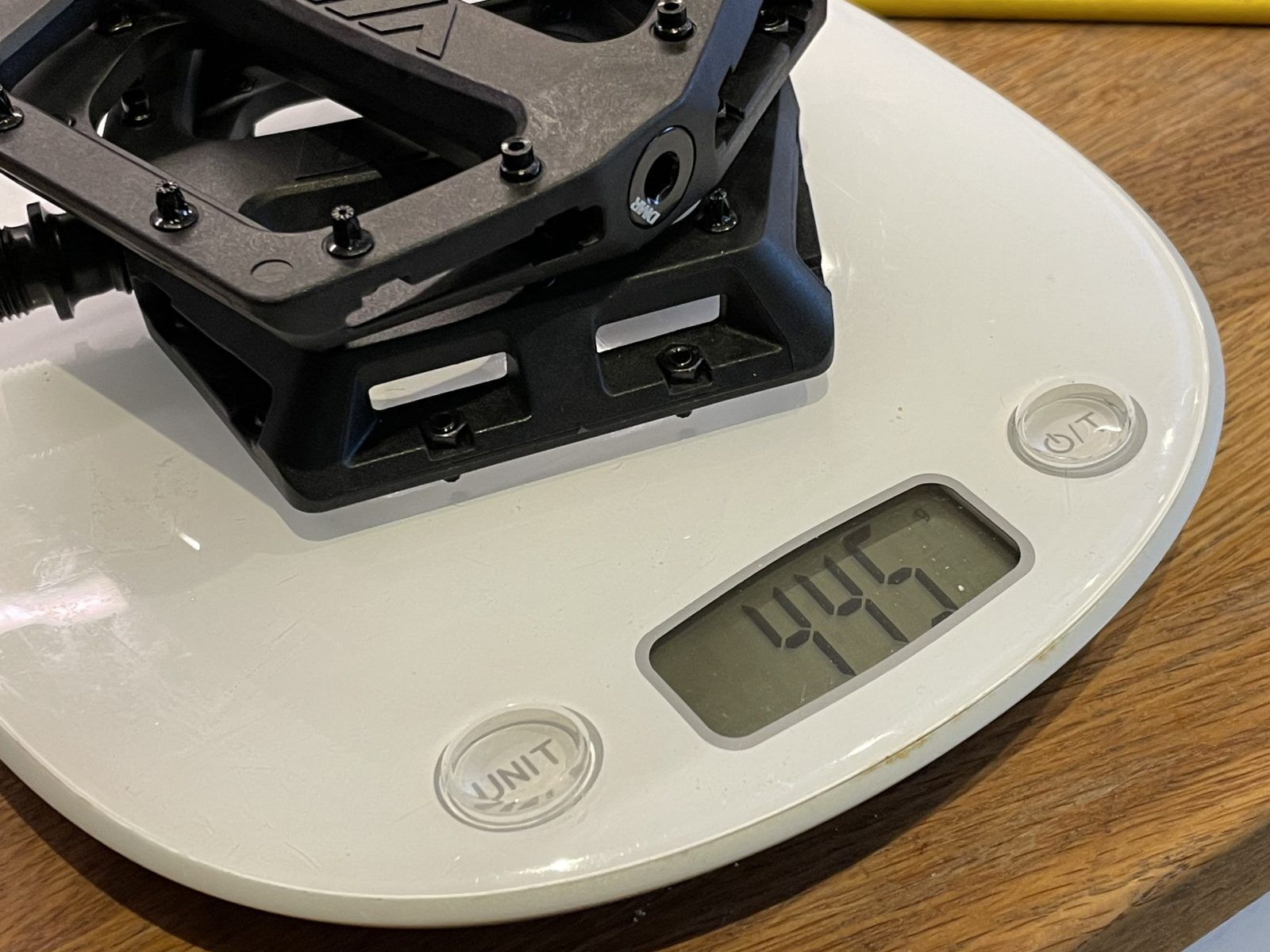
On the trail
Most of my riding heritage has been on SPD pedals – it’s relatively recently that I’ve made an almost complete shift to riding flats. For a number of reasons, including the convenience of flats and the fact the most comfortable shoes I own are flat, I’ve decided that this year I will ride flat until I convert myself. It’s been a learning curve.
My main issue has been positioning my feet on the pedal and desperately trying not to keep looking down to check where I am. This is a downside of riding clipped in for years – I’ve never really had to worry about where my feet are since there’s only two states with clips – you are either clipped in or you’re not. Flats are obviously different and my feet have often ended up all over the platform after I’ve taken my feet off for cornering and the like. This is not something that long time flat riders will feel particularly in tune with I’m sure. Eventually the foot position becomes a learned action and you can be confident where your foot will land without too much thought. But, even so, how a pedal feels through your shoe is a real aid to knowing where you are.
This is all a rambling prelude to me making a great deal out of that concave dip on the V11. That dip allows your shoe sole to compress into it, which adds greater pressure to the surrounding pins and greatly improves the grip to the point you couldn’t really move your foot under load if you tried. But the effect is also felt on the inside and outside areas of your foot where you can really feel the location of the pins. For me this gave me an instant signal that my feet were where they needed to be – or not – without looking down and after a short time I gained the confidence to feel where my feet were instead of looking.
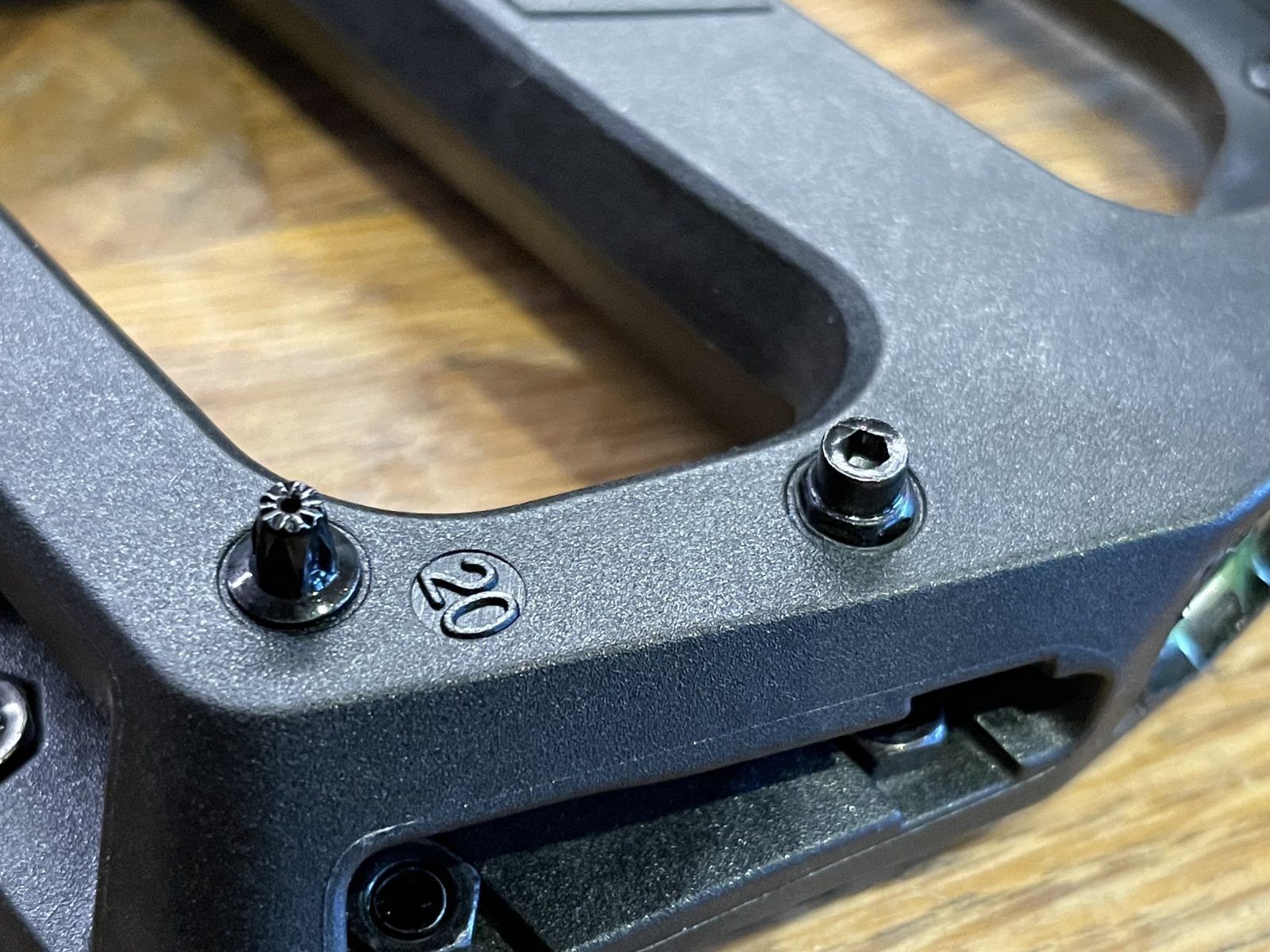
Did I mention that the grip is excellent? That would be not just the central dip but also those Moto pins I mentioned. They are noticeably sharper than the standard pins on the edges and they really dig into the sole of your shoe. That grip does come at the price of adjustment as the special tool you need to take them out or just tighten them up isn’t included in the packaging. It is a standard inclusion in a pack of 44 spare pins however, and a complete set of 44 Moto pins costs just £12 direct from DMR.
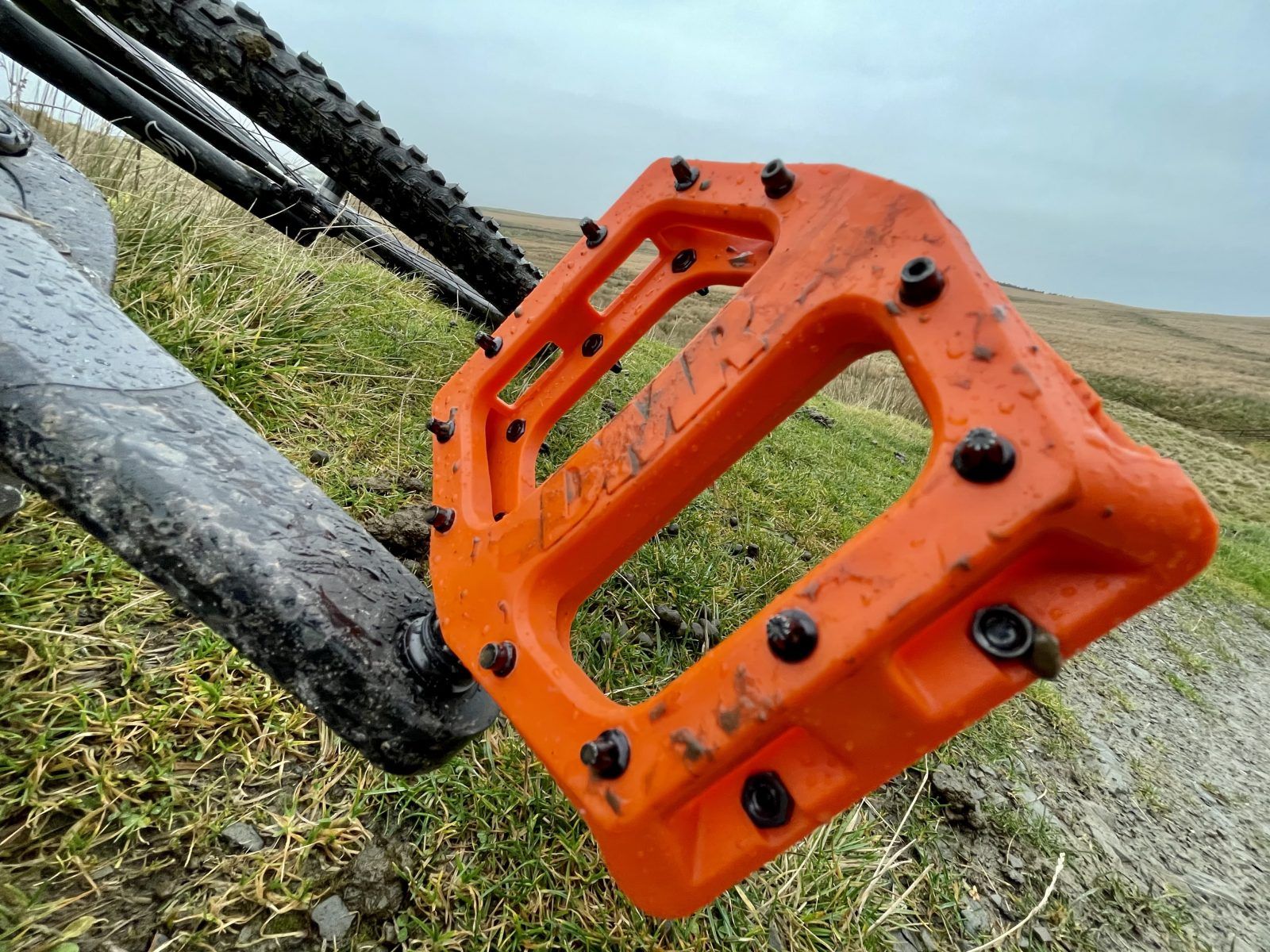
DMR V11 Maintenance
I love pedals that attach using the standard 6mm hex key that I have on every multitool I own and have ever owned. I hate the pedals that need the 8mm key and especially those that don’t even have the common courtesy to have spanner flats. The V11 uses 6mm bolt attachment. So I love them for that.

Getting the axle out took me less than a minute. Off with the aluminium 6mm cap and then in with the socket to unfasten the bolt. The cavity is plenty wide enough and you don’t need some rare skinny socket to get it off. It’s a locking bolt so there’s no losing little washers. The insides of my test pair were exceptionally well greased. I have no doubt that maintenance will be a quick and easy job down the line.
The aluminium cover serves as a way to locate the axle in the correct position as well as keeping out the rest of the world. On the inside bushing there is a rubber compression washer that seals things. There was no locking compound on the outer aluminium cap and considering how important it is I’ll be adding some of my own to make sure I don’t lose it, but that’s just me being over cautious I’ve no doubt.
Inside end, home of the bushing The outside end home to the sealed bearings
Overall…
…these budget pedals are great performers. They offer up as much grip as much more expensive pedals thanks to that clever concave central area and those pointy Moto pins and despite their price tag the ease of maintenance and availability of spares means these should last a good long time. Oh, and there’s enough colour choices to suit even the most garish of tastes.
All the DMR V11 spares
Tested with…
For reference I tested these pedals wearing these Specialized 2FO shoes.
Review Info
| Brand: | DMR |
| Product: | V11 |
| From: | DMRbikes.com |
| Price: | £50 |
| Tested: | by Mark for 1 week |
Comments (6)
Leave Reply
Post Comment
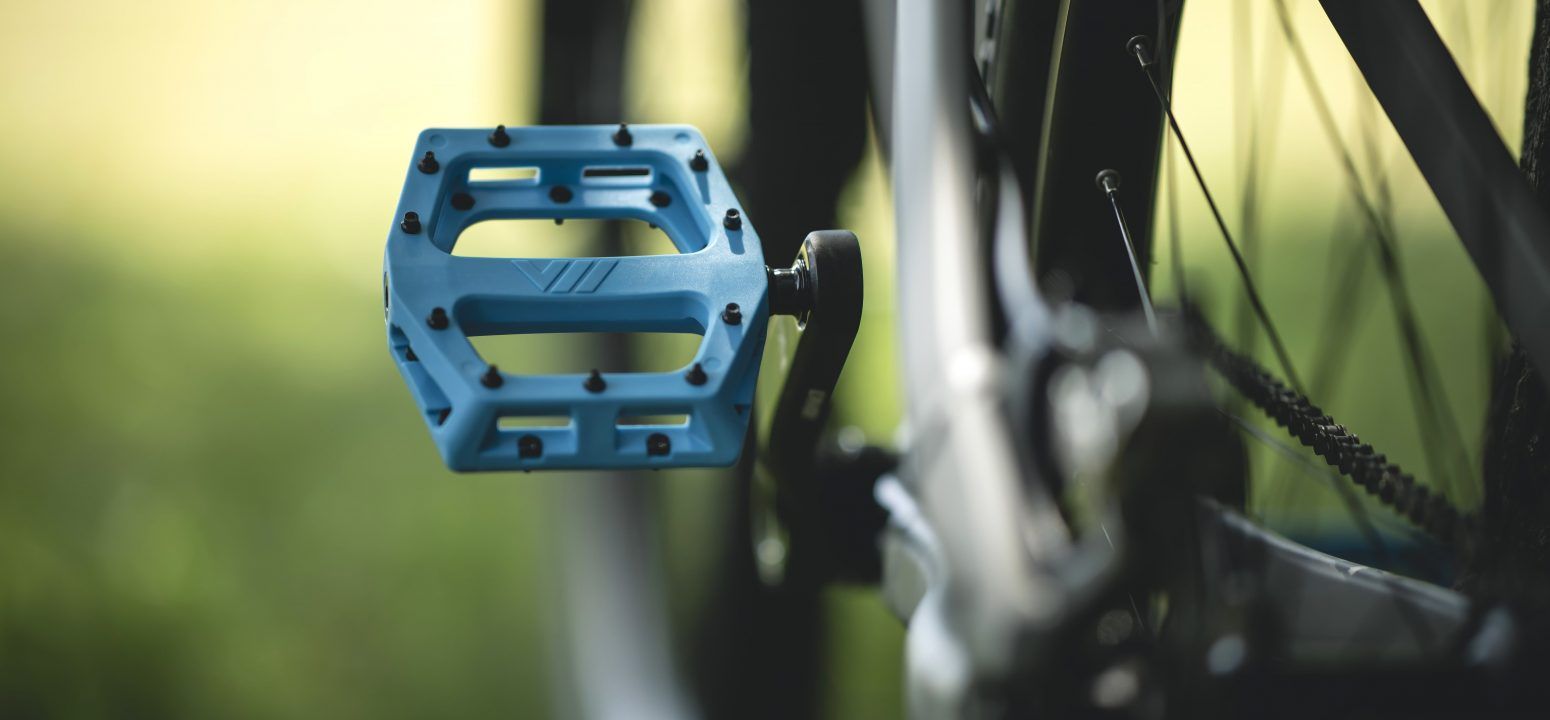
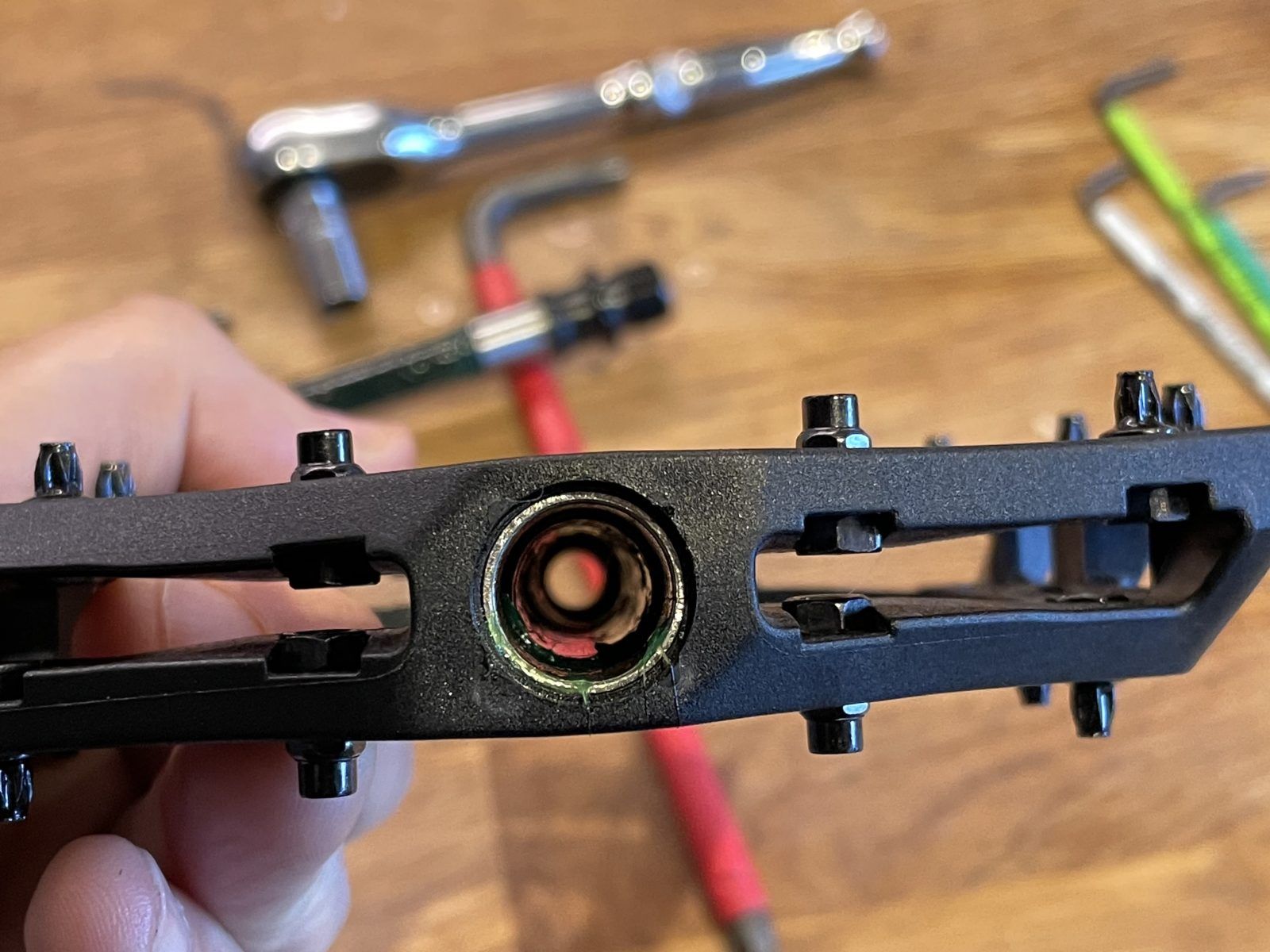
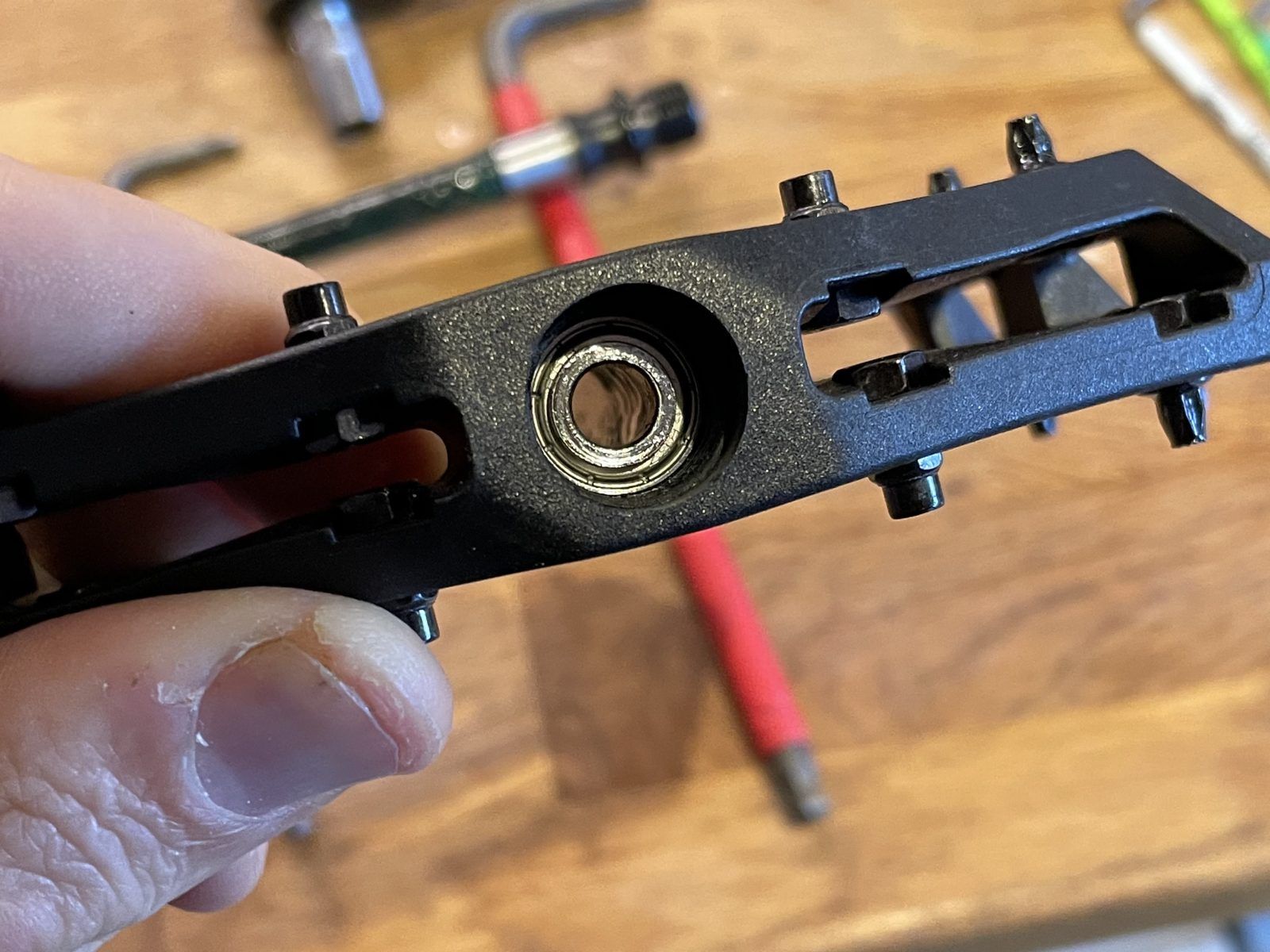
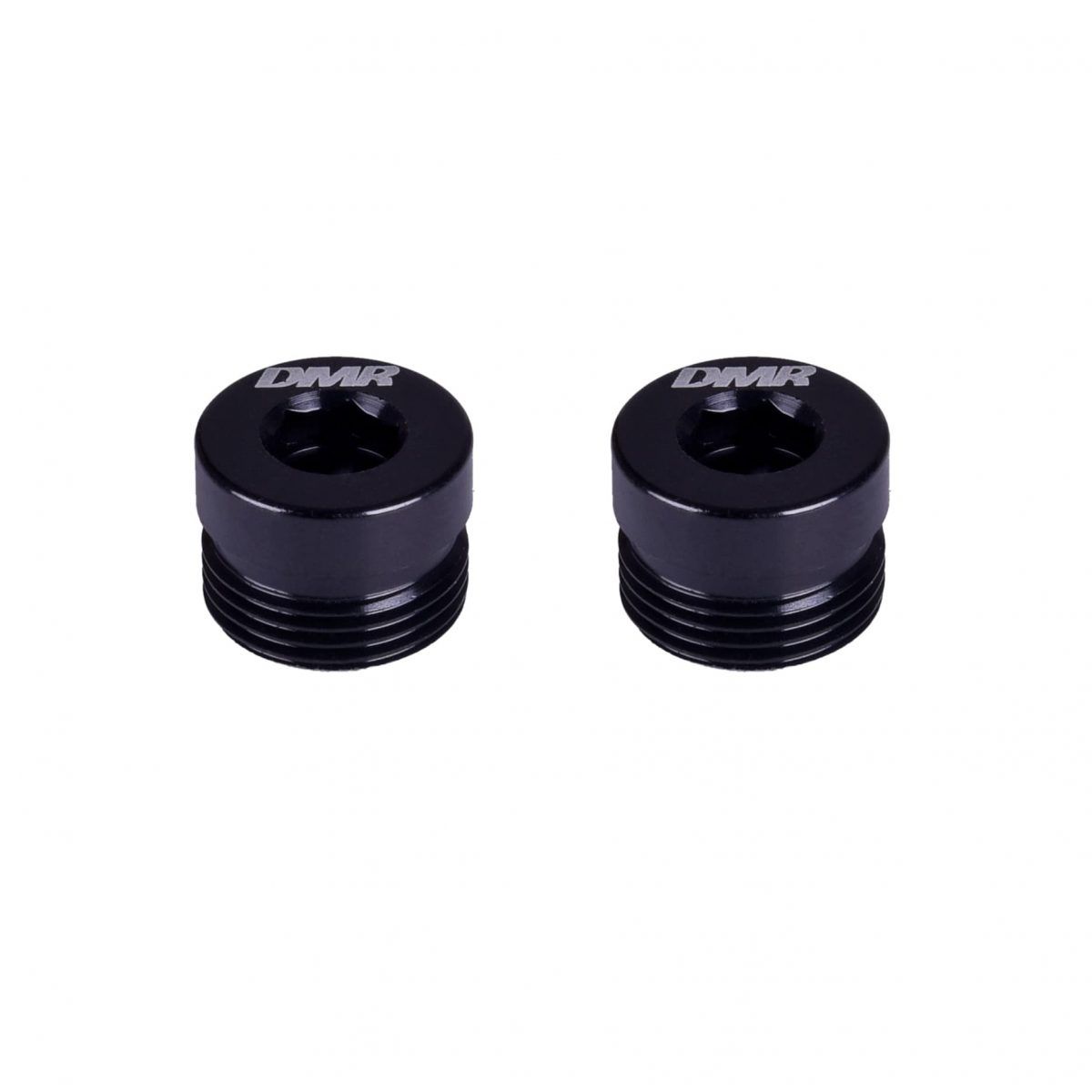
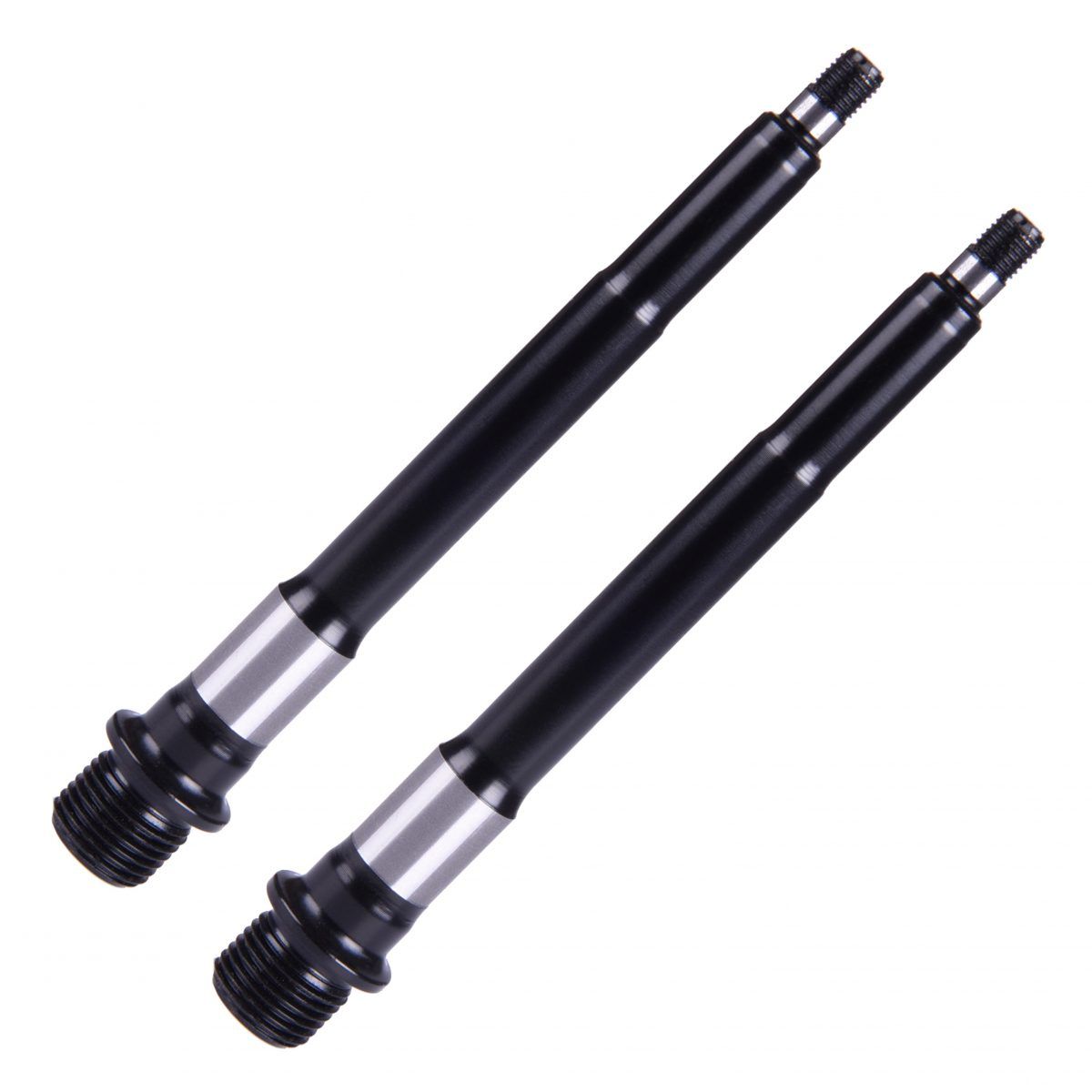
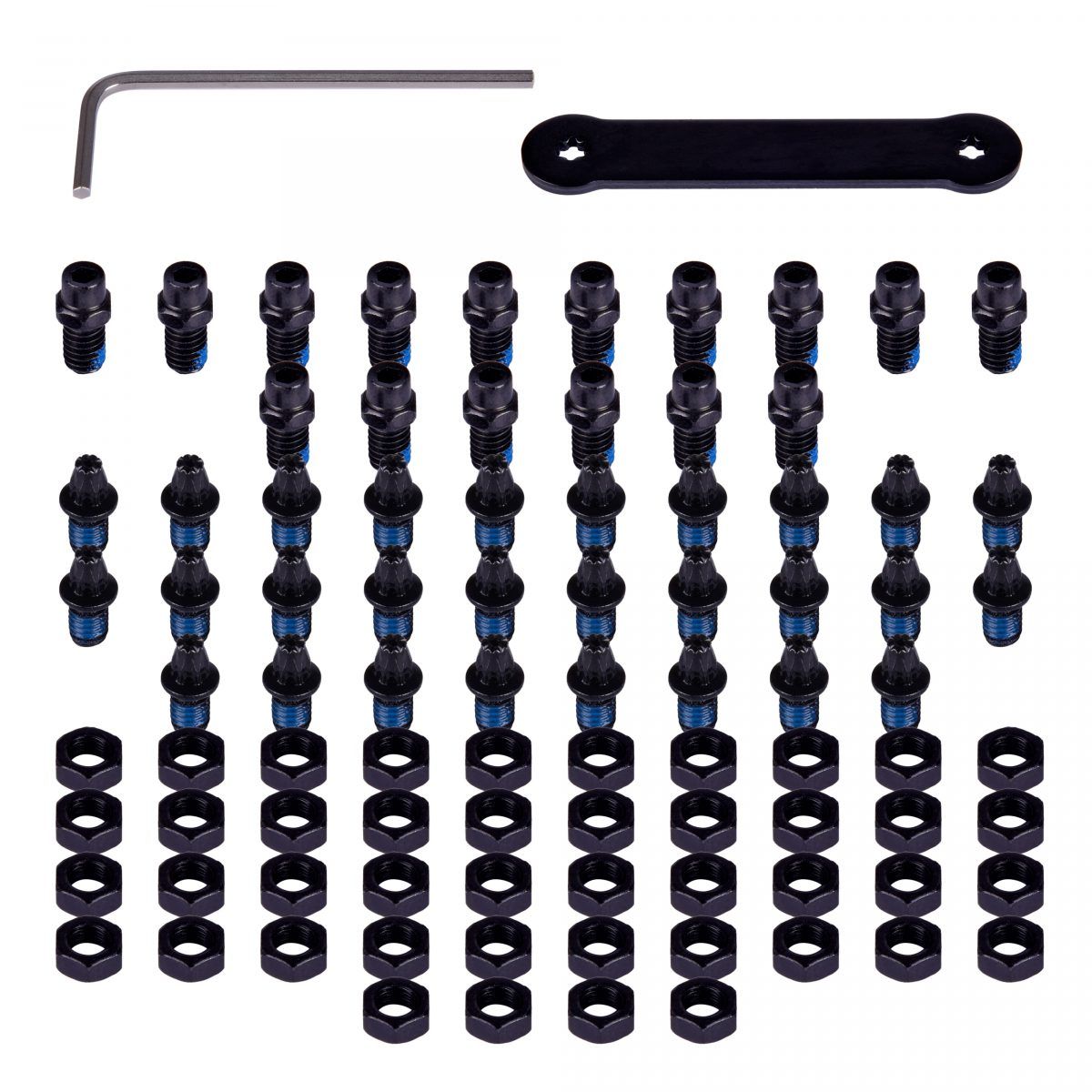
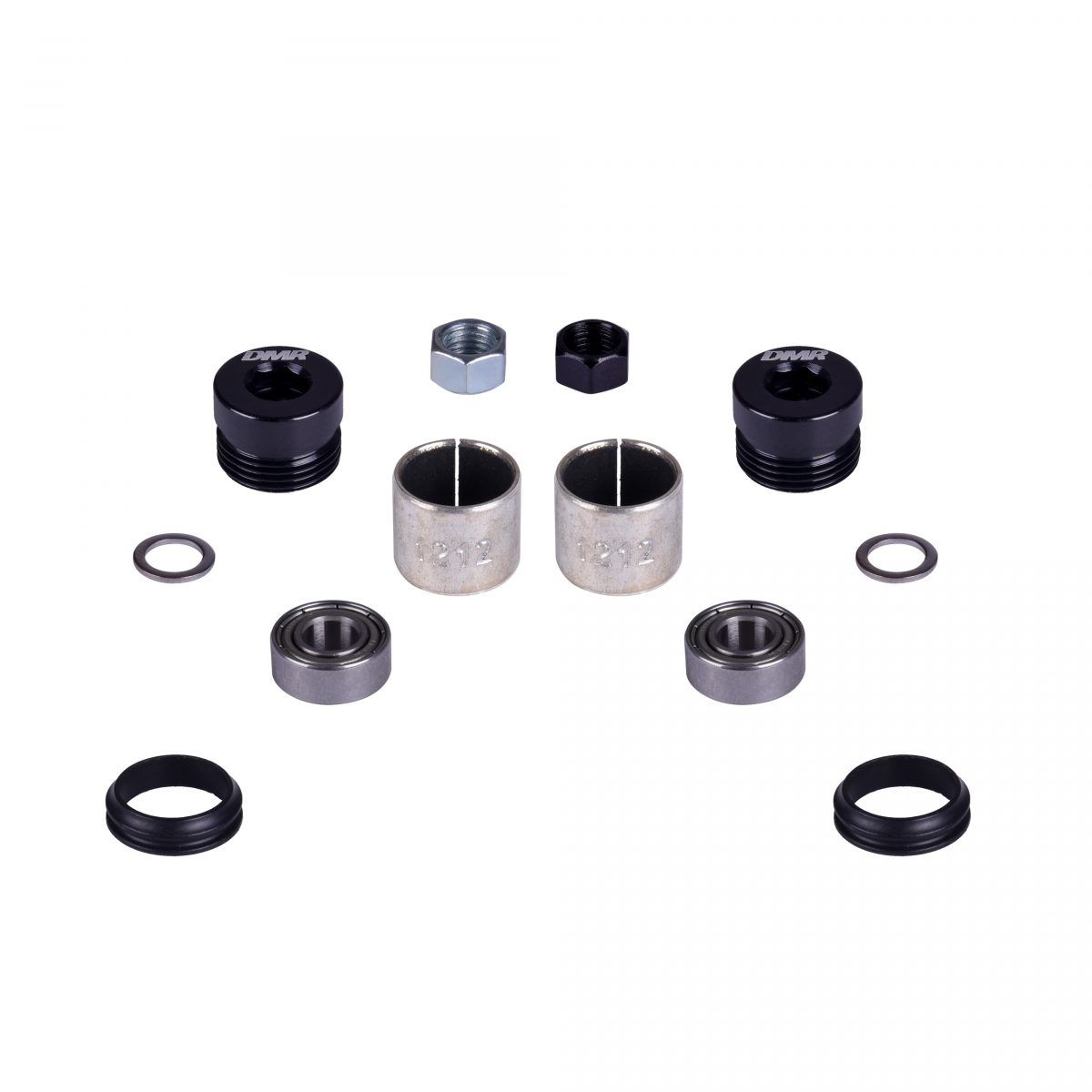

Composite pedals make sense when they’re cheap and/or light but these are neither.
I love a DMR pedal but you can get V12 Mags for £50 these days and they’re 100g lighter too.
“you can get V12 Mags for £50 these days”
That’s not a fair comparison. They retail at £70. So these are £20 cheaper. And if they had the same sort of discount online as the v12s you refer to, then they’d be £35. Which is cheap.
I ride with vaults and remove the pins closest to the crank arms. For some reason it just feels odd with my feet in so close to the cranks.
I’m in need of some new pedals as I’ve had pins ripped out after pedal strikes. I’ll add them to my Christmas list.
£50 is budget for a flat pedal now is it?
Just not quite getting it with these. They’re more expensive and way heavier than most competitor composite pedals, and I’m not really seeing where that goes? The pins look good but, well, if there’s a market for these it’s surely only because you can’t buy a Nukeproof Horizon Comp any more except in ugly colours.
“composite material of Nylon and resin. They are not plastic”
eh?
The HT PA03A is cheaper and lighter than this pedal, by a fairly significant margin. I’ll stick with those, I think.